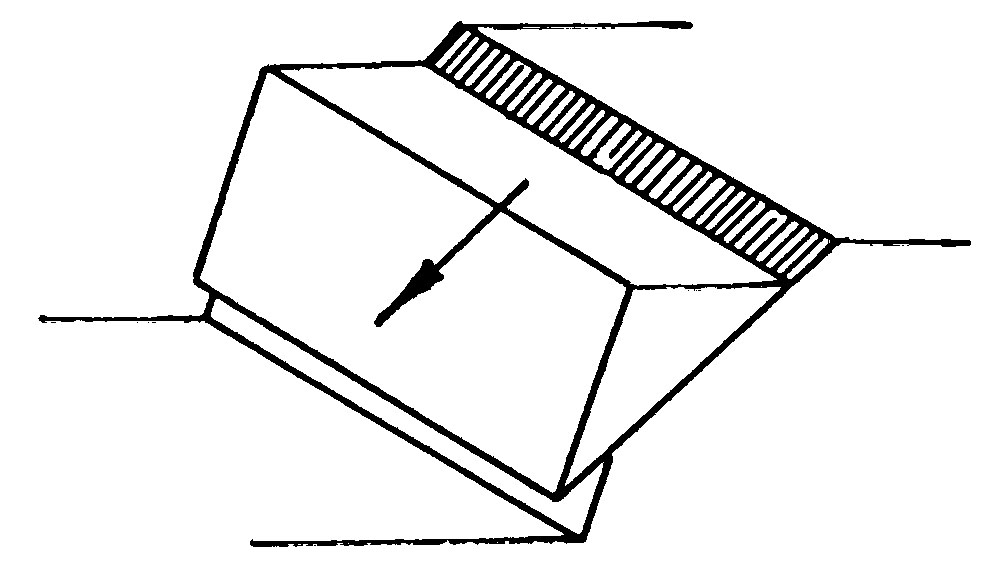Question
In: Civil Engineering
Using pictures and/or diagrams describe and explain four (4) basic modes of rock failures and the...
- Using pictures and/or diagrams describe and explain four (4) basic modes of rock failures and the factors contributing to pit slope instability. (12 points)
Please type your answer, Please do not write on the paper and post it (minimum 2 page)
Solutions
Expert Solution
1. Four basic modes of rock failure are as follows-
- Plane failure-

A rock undergoes this mode of failure by structural discontinuities like bedding planes, faults between weathered rock and wedges between the rock which are free to move . Plane failure leads to sliding action along the failure surface.
Favourable Conditions for plane failure are -
i. The plane on which sliding occurs must lie parallel (±20°) to slope face.
ii. The dip of the sliding plane must be greater than angle of internal friction.
iii. The dip of the sliding plane must be less than dip of slope face.
-
Wedge Failure-

Wedge failure can occur in rock mass to slide along two intersecting discontinuities. Wedge failures can happen very fast in a matter of fraction or it can happen slowly and gradually in several months.
- Topping Failure-
Topping failure occurs when column of rocks steep discontinuities which eventually leads to slippage of the layers. It includes overturing of rock layers.This failure action causes due to the column’s center of gravity lying outside the base dimensions. This failure can be further classified depending upon the modes as-
i. Flexural
ii. Block
iii. Block Flexural.
- Circular Failure-

In circular slips shape of failure surface may be circular arc or non-circular curve, it may occur in weak rock or soil slope. Sliding of material along curve is called circular failure. This failure necessarily does not occur on circular arc, sometimes surface can be apparently normal.
Types of circular failure are-
i. Slope failure
ii. Base failure
iii. Toe failure.
2. Factors contributing to pit slope instability are as follows-
- Geotechnical Discontinuities-
The main geotechnical discontinuities affecting pit slope instability are fault, joint, amount and direction of dip , bedding plane of rock mass. Instability may occur if the strata dip into the excavations even if the clay band comes between two rocks.
- Geotechnical parameters -
The main geological parameters which affect the stability of the slopes in the open pit mines are shear strength of rock mass, cohesion, moisture content.grain size, moisture content, atterberg limit, etc
- Lithology and Ground Water -
Pit slopes having soil alluvium or weathered rocks ground water, drainage pattern, rainfall, permeability, aquifer, etc are the Lithology and Ground Water which also comes in consideration affecting pit slope instability.
- Slope Geometry -

Slope geometry is the important factor which affecting the slope instability. Factors which comes into consideration of slope geometry are height and angle of slope, bench height and angle, area of failure.
- Dynamic forces -
Dynamic forces affecting pit slope instability are Blasting, Seismic activity.
- Method of construction -
The method by which construction is carried out like Shovel, dumper, BWE or combination, can also affect the stability of the slopes in the open pit mines.
Summary- Four basic modes of rock failure are Plane failure, Wedge Failure, Topping Failure, Circular Failure.
Related Solutions
Using pictures and/or diagrams describe and explain in detail the difference between conventional surface mining and...
Using pictures and/or diagrams, describe and explain three (3) methods used to monitor pit slope stability....
Using pictures and/or diagrams, describe in detail the digging forces generated by both the Electric and...
Using pictures and/or diagrams, list and describe the components of each of the three major assemblies...
Describe the life cycle of a (-)RNA virus. (no pictures or diagrams)
1). Describe the four (4) basic management functions. 2). Using one (1) example, explain how these...
1.a. RISC-V has several addressing modes. Describe 4 addressing modes. For each, describe what it does...
1. Describe the basic features of the bacterium Staphylococcus aureus (S. aureus) and its modes of...
Describe in detail chemical synapses, transmitter-gate (ligand-gated) channels and GPCRs. Diagrams and pictures can be included...
Explain the four basic stages of negotiation.
- Describe why the mining of uranium are often pollutes the local environment?
- Explain why vacuum pumps are used with rotary evaporators. What is the advantage of using a...
- What are three incidences in which animations or transitions may be appropriate in a business presentation...
- Initial public offering On April 13, 2017, Yext Inc. completed its IPO on the NYSE. Yext...
- The Distance Plus partnership has the following capital balances at the beginning of the current year:...
- 1 A buffer is prepared by mixing 50.0 mL of 0.100 M acetic acid with 30.0...
- Discuss property the importance of earnings management, and the role that ethics plays in its reporting....

 Ally Wells answered 2 years ago
Ally Wells answered 2 years ago